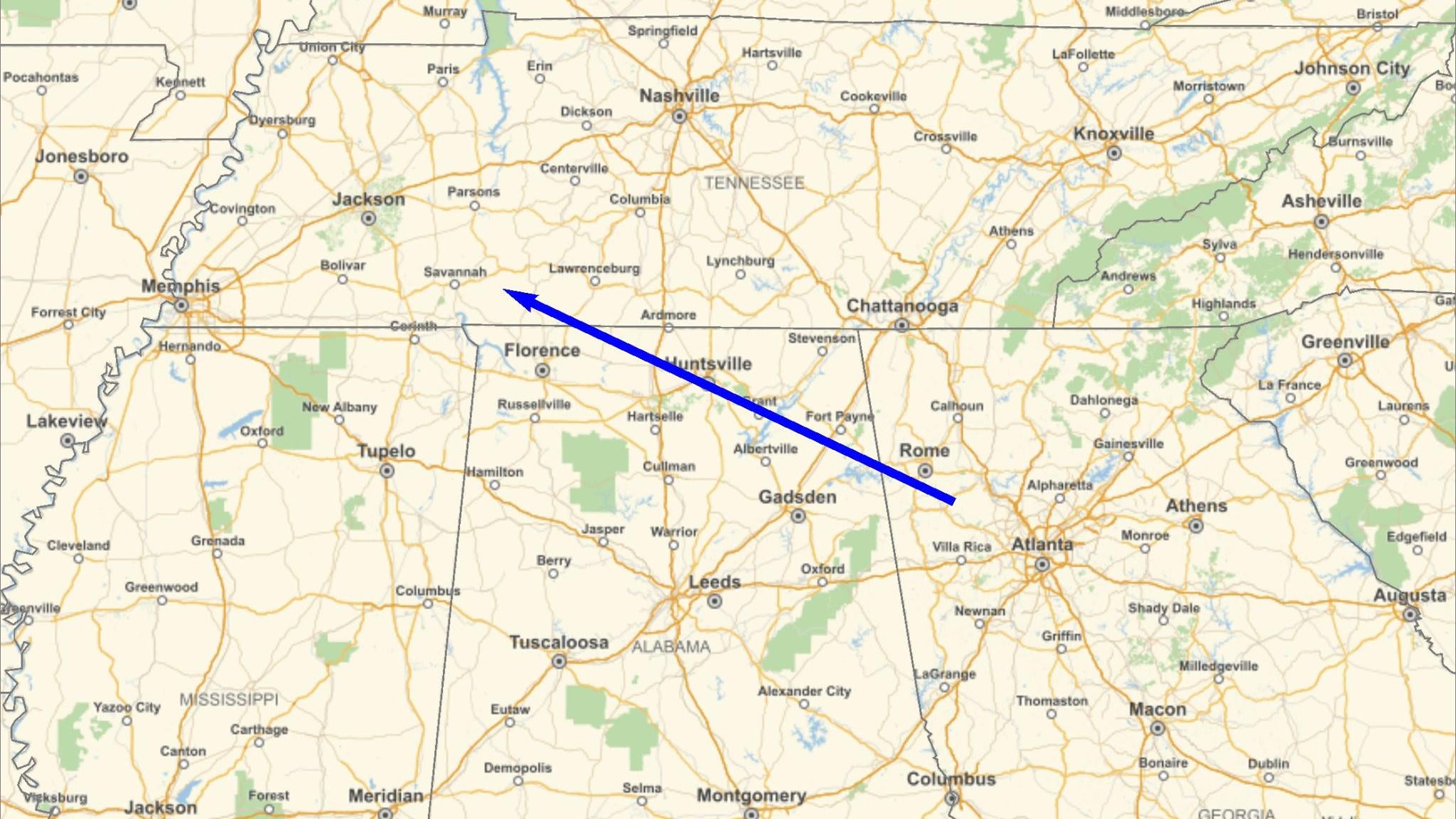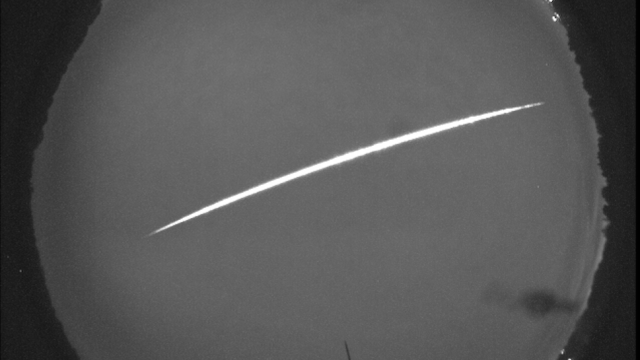Skywatchers in Georgia and Alabama were treated to a glorious light show this Tuesday when a rare earthgrazing meteor zoomed across the night sky.
The bright fireball became visible at 6:39 p.m. ET on November 9, and it was so bright that some skywatchers were still able to see it through partially overcast skies, as NASA Meteor Watch explained on its Facebook page. The object first appeared above Taylorsville, Georgia, moving northwest at 61,960 km per hour and at an altitude of 89 km above Earth.
The meteor hunters were able to calculate the object’s trajectory and orbit thanks to three NASA meteor cameras in the region, but some extra number crunching was required due to the surprising length of its journey through Earth’s atmosphere.
The fireball seen over Georgia and Alabama “was what we call an earthgrazer, in which the meteor’s trajectory is so shallow it just skims across the upper atmosphere for a long distance,” according to NASA Meteor Watch. On rare occasions, earthgrazers will even “bounce off” the atmosphere and venture back into space. That did not happen in this case, as the meteor eventually disintegrated.

This particular meteor entered our atmosphere at an angle of 5 degrees from the horizontal, according to NASA, allowing it to travel as a fireball for a long distance. As the NASA Meteor Watch Facebook post explained, “its path was so long that our automated software could not handle all the data,” so the team ran another analysis code the following morning and discovered that the meteor travelled not 147 km as originally reported, “but but a whopping 300 km through the air.” The updated calculations place the end point of the meteor’s journey above Lufts, a town in southern Tennessee. So technically, this meteor flew over three states.
Because the meteor’s light was dimmed by overcast skies, the team was not able to estimate the object’s size. Still, it’s a “rare meteor for those fortunate enough to see it,” as NASA Meteor Watch writes.
This particular type of astronomical phenomena is rare, but skywatchers in South Carolina caught a particularly long one on May 14, 2014, when an earthgrazer flew 467 km through the atmosphere before burning up.
